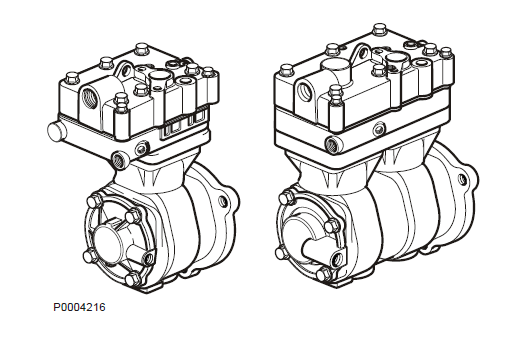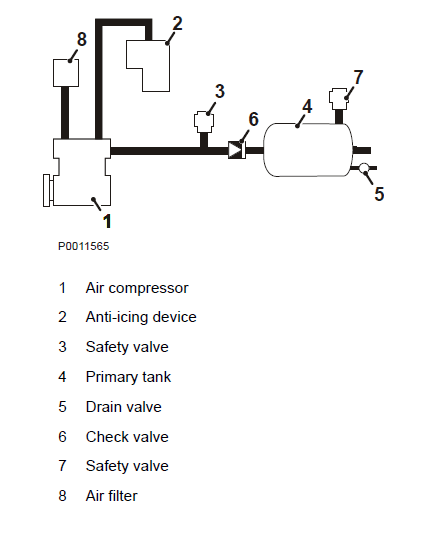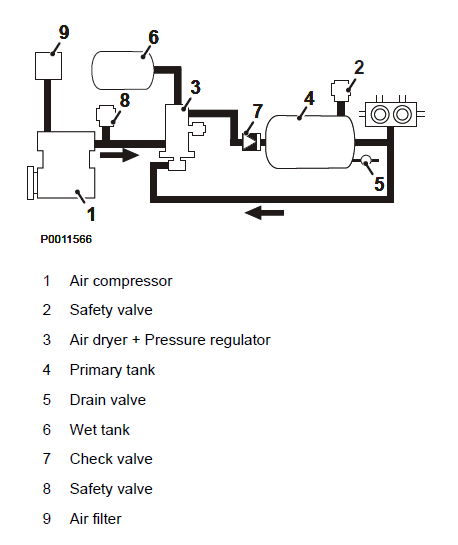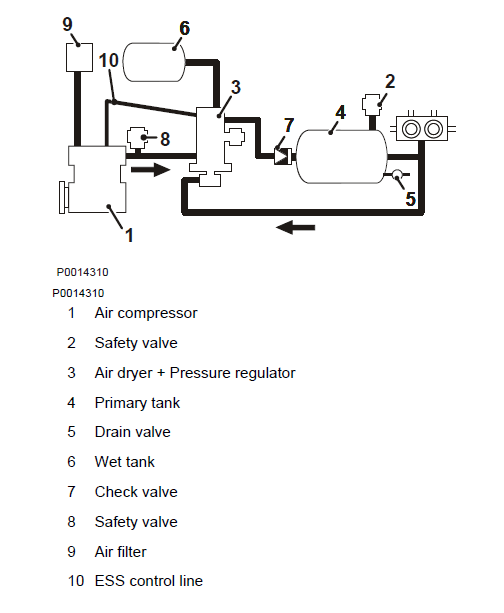It is absolutely essential to align the engine with the driven unit. If this is not done correctly the stress on the crankshaft, engine mountings, drive shaft and coupling can be so great that it will lead to a cessation of operations. Check that the drive shaft is straight before commencing alignment work. Imbalance in the driven unit, the drive shaft and coupling can cause noise and vibrations. Therefore these components must be balanced. The alignment work will be easier if adjuster bolts are installed on the engine supports. After alignment, the distances between the frame and each bracket must be measured. Steel shims of the correct size must then be installed.
Crankshaft End Thrust
The crankshaft thrust bearing is designed to allow a certain end float. No axial pressure may be present on the crankshaft or flywheel, as this may cause serious damage. End float for each engine can be found in the Sales Support Tool, Partner Network, service manual in technicaldata.
Torsional Vibrations
The diesel engine and the equipment it drives (from the front or rear ends) comprise rotating masses connected by a series of shafts. This unit makes up a torsionally elastic system that vibrates at its natural frequency when it is influenced by an impulse torque. When the impulse torque frequency is the same as the natural system frequency, or one of its harmonics, resonance conditions arise. These conditions cause great vibrational stress that may lead to damage to the crankshaft or driven shafts.
It is therefore necessary that the entire system, i.e. engine and the driven equipment (including the power take-off at the front end where fitted), has such characteristics that excessive torsional oscillations cannot occur. As a general rule all axially driven inertia must be as small as possible to minimize vibrational torque effects. Driven equipment that causes damping in the system has an advantageous effect on torsional oscillation characteristics. The use of a flexible coupling in the system has a similar advantageous effect and the coupling manufacturer is usually able to provide advice on this issue.
Rule of thumb for when TVC calculations should be made
• When changing engines on older installations, socalled re-powering.
• When adding equipment, e.g. auxiliary alternators or pumps driven by shafts external to the engine.
• When selecting new combinations, e.g. another type of alternator.
Also refer to previous chapters in this document regarding torsional oscillations.
Compressed Air and Hydraulic
System
General
Most engines in the Volvo Penta range of industrial diesels can be equipped with an air compressor and a hydraulic pump. There are a number of air compressors and hydraulic pumps to choose from in the Sales Support Tool, Partner Network, optional equipment. There are also flanges and attachment kits for hydraulic pumps not normally carried by Volvo Penta. It is absolutely essential that air compressors and hydraulic pumps that are not supplied by Volvo Penta be approved by Volvo Penta for installation on the engine concerned. Hydraulic pumps cause great cyclical torque variations on the timing gear and this must be calculated before installation so that torque variations are within maximum permissible values.
Compressor
Volvo Penta currently supplies a large range of air compressors, depending on capacity and engine type. The air compressors are supplied with drive gear. All versions have air-cooled crank cases, and some have air-cooled cylinder blocks. Cylinder head cooling is by engine coolant. Only the smallest compressor has an air-cooled cylinder head. The engine lubrication system also lubricates the compressor. Air to the compressor passes through an air filter that removes dust and dirt particles. Refer to the Sales Support Tool, Partner Network for technical details. The compressor drive is installed on a conical shaft and must not be heated before installation. When the drive gear is removed it may be heated to maximum 200 °C (392 °F) so the drive gear annealing is not impaired.

Compressor design
The air requirement must be calculated in order to determine the compressor size required. The compressor load cycle must also be determined. Where necessary, the values for permanent connection must be determined by measuring the delivery and idle times over a longer period of operations.
Design and Function of the Compressed Air System
The compressed air system comprises chiefly a delivery system and a regulator system. The delivery system produces, stores, and delivers compressed air to a vehicle's various air-driven components. The control system regulates air pressure e.g. to the vehicle's brakes.
Delivery system
The delivery system may be one of two different types depending on the anti-icing system used. Delivery system with alcohol vessel The compressor (1) is the air production component in the delivery system. It is driven via engine gear wheel and lubricated and cooled by the engine lubrication and cooling systems. By adding anti-icing fluid to the air passing to the compressor or the air between the compressor and the pressure regulator, air is prevented from freezing and forming ice blockages in the system.

This is performed by the anti-icing device (2) through which air passes and carries over anti-icing fluid in gaseous form. Compressed air is forced into the tank (4). Any moisture in the air condenses here and can be drained through the drain valve (5).
Delivery system with air dryer
As an alternative to the anti-icing device the delivery system can be fitted with an air dryer + pressure regulator (3). Air passes through a drying agent in the dryer and any moisture is removed. Because regulating systems vary from one installation to the next, such systems will not be addressed in this installation manual.

Compressor with ESS
Compressor with ESS function Ess control line (10)
The control line for the compressor with ESS (energy saving system) must laid by the customer with a continuous inclination between the cylinder of the compressor and the pressure governor or the air drier.

Dimensioning of the control line
Line length: ≤ 6 m (20.2 ft)
Line diameter: 4 mm
If the line length or the width of the control line is increased, trouble-free functioning of the ESS is not ensured.
If the customer renounces the ESS, the connection of the control line at the compressor must be closed with a bore of 2 mm using a locking screw of M10x1. This breathing bore ensures that the control piston clearly remains in its position and the full compressor delivery is always guaranteed.
NOTICE! For ESS compressors, a minimal disconnection pressure of 8 bar must be considered.
Dimensioning of the pressure pipe
Pipe lengths exceeding 4 m (13.5 ft) are admissible, but require the assessment of the compressor manufacturer regarding the observation of temperature limits at the following systems as regards their functioning during summer/winter operation. For compressors with ESS, the pressure pipe can be reduced to 8 mm, if the admissible air intake temperature at the following system is observed.
NOTICE! Make sure that no condensed water can flow to the compressor or remain in the pipe. Therefore, lay pipes with an inclination.
For More Volvo Engine workshop information, please visit
Volvo Diesel Engine Installation and Power Take Off
Copyright © Guangxi Dingbo Generator Set Manufacturing Co., Ltd. All Rights Reserved | Sitemap
Update cookies preferences